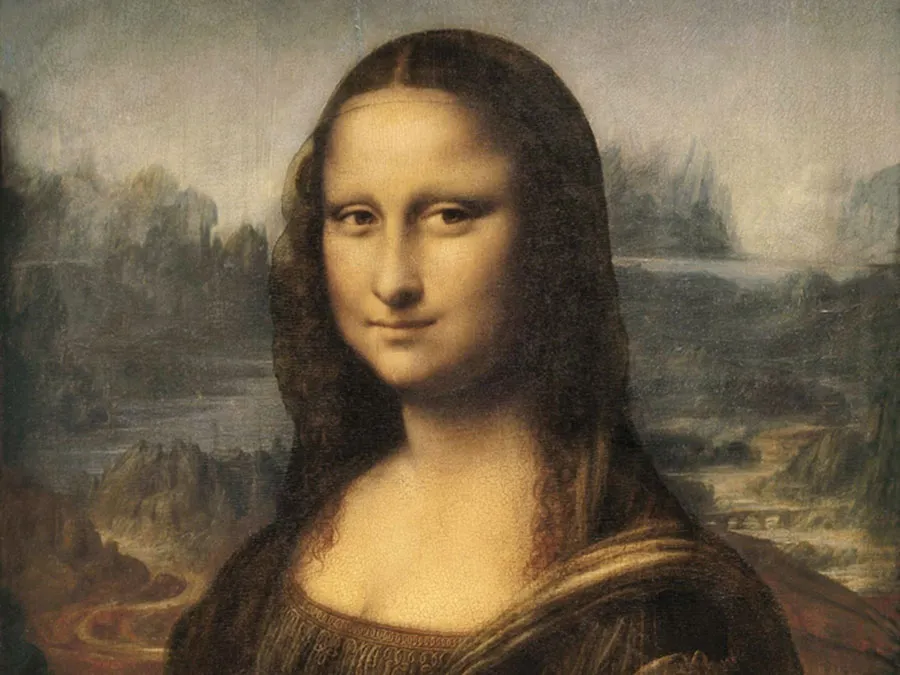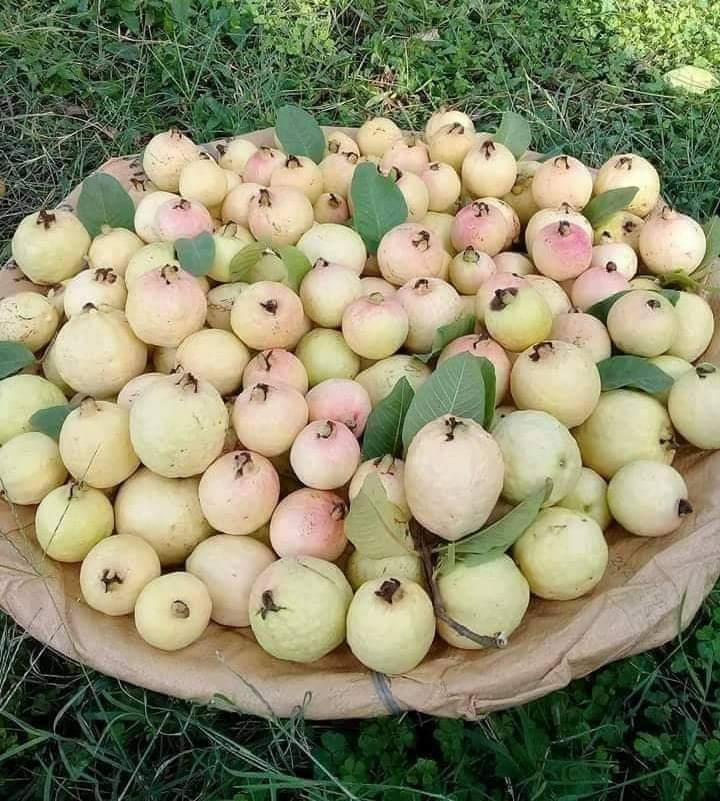Emergence of the Asian Tigers
Over the past 70 years, in East Asia, the fastest-growing developed economies are referred to as the ‘Asian Tigers’. The four Asian Tigers are Singapore, Taiwan, Hong Kong, and South Korea. Among them, South Korea stands out not just as an economically developed nation but also as a cultural superpower. South Korea’s iconic “Gangnam Style” song became the first YouTube video to surpass 1 billion views. The TV show “Squid Game,” originating from South Korea, is one of the most watched TV shows globally. Even YouTube sensation Mr Beast’s most popular video is about Squid Game. Additionally, South Korean bands like BTS and Blackpink are achieving international fame, K-Dramas are becoming more and more popular, and South Korean movies such as “Oldboy” and “Parasite” receive acclaim and prestigious awards globally. Notably, “Parasite” made history as the first non-English film to win an Oscar for the Best Film. How is this happening? Is it merely a stroke of luck that South Korean content and products are gaining immense popularity worldwide, or is it the result of a well-thought-out strategy by the South Korean government? let’s try to understand,
South Korea’s Evolution: From Struggle to Prosperity
How did South Korea become a Cultural Superpower? Let’s start our story from August 15, 1945, a pivotal day when Japan officially surrendered, marking the end of World War II. While Germany, Italy, and Japan faced significant defeats, Korea, previously under Japanese rule, gained its freedom.
Cultural Repression and Evolution
This is why 15th August, is known as National Liberation Day in both North and South Korea, Back then, North and South Korea were not separate entities but one unified country, Korea. The division occurred after World War II, when the Soviet Union and the United States agreed to split Korea into two parts. Southern Korea, under U.S. command, and northern Korea, under Soviet command, The plan was to put North and South Korea under trusteeship for a period of 5 years to assess Korea’s progress and determine their future. The ultimate plan was to reunite Korea as an independent nation after 5 years. Unfortunately, it didn’t happen. Tensions escalated between the United States and the Soviet Union, marking the beginning of the Cold War. In 1948, the United Nations attempted to conduct supervised elections in North Korea but that proved unfeasible. Meanwhile, elections proceeded in the U.S.-controlled South Korea, and a new Constitution was adopted. And so, on August 15, 1948 the Republic of Korea was born. A new, liberal, democratic nation. “Our General of the Army Douglas MacArthur and Mrs MacArthur, to attend ceremonies formally proclaiming the end of the US military government in Korea, and the formation of the free and independent Korean Republic.” The next month, North Korea was declared a communist country under a dictatorship. 2 years later, in 1950, North Korea attempted to reunify the two Koreas not through a peaceful treaty, but through invasion into South Korea. This sparked a war. A conflict that persisted for three years. The Korean War. “In Korea, United Nations’ troops push on in the cautious advance against the communists.” Consequently, South Korea became one of the poorest nations in the world. The country was so poor at the time that its GDP per capita falls below that of present-day Somalia and Haiti, both among the world’s poorest nations today. This dire poverty takes a toll on democracy, leading South Korean President Rhee Syngman to adopt an authoritarian stance. He introduced constitutional amendments and the country shifted towards dictatorship. Elections were conducted in 1960, but later, it was revealed that they were rigged. Triggering nationwide protests. President Rhee fled the country due to the protests, prompting new elections. A new South Korean prime minister was elected in these elections. However, a military coup unfolded soon after, with General Park Chung-Hee overthrowing the government and establishing military dictatorship. Although he was assassinated in 1979, there was another military coup, in which another general came to power.
Governmental Strategy for Cultural Export
It was only in 1987-88 that a revival of democracy took place in South Korea. The prolonged era of dictatorships left a lasting impact on South Korean culture, censorship. In 1962, Park Chung Hee introduced a Motion Picture Law, which underwent four revisions in the following decade, each time becoming more stringent. During that time, films released in South Korea had to undergo a government approval process for their scripts. And once the film was made, these films were scrutinized to ensure they aligned with the approved government script. Which films would be allowed by the government? Violent films were allowed, many martial arts films were released during this time in South Korea, melodramas were allowed, and propaganda films were obviously allowed, which were often financed by the government. Even films with explicit content were allowed. They were known as ‘hostess films’ and featured at least one character playing the role of a prostitute or a bar girl. But what wasn’t allowed? Making films addressing real socio-political issues. Far from films criticizing the government, any film addressing any issue in the country wasn’t allowed. A sharp contrast to the present-day Korea. Today, Korean content landscape is diverse and thriving. Icons like Gangnam Style, BTS, and Squid Game have achieved global recognition. If you don’t believe me, you can check it out Amazon Mini TV, it has a plethora of Korean content on it. The top 5 Korean shows include Cheer Up, Warm Meet You, Weightlifting Fairy Kim Buk-Joo, She Was Pretty, and Tempted. Among them, the show Cheer Up stands out to me, it’s about friendship, life, dreams, and passion it is an inspiring story of an underdog that resonates with many. When watching foreign language content one problem is, you can’t understand the language. But Amazon Mini TV provides Hindi dubs, and Tamil and Telugu dubs for select shows. This allows viewers to enjoy content from around the world in their preferred language, providing a unique opportunity to explore diverse cultures. The Amazon Mini TV app is easily downloadable from the Play Store, and you don’t need a subscription to watch any shows. The platform is ad-supported, enabling users to enjoy all content for free, and the best part is that there are new additions every week. You can find the link to download Amazon Mini TV in the description below. I want to thank them for sponsoring this video. Now, let’s return to our main topic. During the period of dictatorship, South Korea implemented a ban on foreign songs, as reported by the New York Times in 1975. South Korea Banned ‘Decadent’ Foreign Music The ban covered every foreign song that didn’t have a ‘moral standard’, leading to the creation of two extensive blacklists comprising over 260 songs. This included protest songs, rock songs, folk songs, and even iconic works like Bob Dylan’s legendary ‘Blowing in the Wind.’ The restrictions persisted until the 1990s when democracy was restored, marking a turning point. In 1993, the Hollywood film Jurassic Park gained immense popularity globally, generating substantial revenue at the box office. The South Korean Presidential Advisory Board on Science and Technology submitted a report to the South Korean President highlighting the Hollywood film’s financial success, equating it to the revenue from selling 1.5 million Hyundai cars. After this, the government decided to promote media production as a strategic industry. That same year, a Korean film, Seo Pyeon Je, was released in Korean cinemas. People weren’t expecting much from this film at this point in time. Because only Hollywood films were hits on the South Korean box office. But this film was based on traditional folk story telling. This film was so loved by the masses that this became the first Korean film to sell over 1 million tickets, solely in Seoul, the South Korean capital. This success prompted the government to recognise the potential of the media industry. They decided to turn Korean culture into a global export and took proactive measures to facilitate its growth. To understand this focus on exports, it’s essential to consider the Korean economy. Between 1962 and 1989, the nominal GDP per capita of South Korea increased fiftyfold, from $104 in 1962 to $5,438 in 1989. General Park nationalized numerous private banks across the country, due to the dictatorship, Park controlled almost everything, overseeing aspects such as interest rates, tax benefits, foreign exchange allocation, and import/export licenses, Park controlled everything. General Park used his control to promote the Chaebols, which is a Korean term for large family businesses. These entities were shielded from foreign competition, and the government permitted them to exploit labour within the country. If you’d recall my case study on Singapore, where I discussed how Singapore became so developed, in case you haven’t watched it, the link to that video is in the description. The problems faced by Singapore back then were similar to the challenges faced by South Korea. Small nations, grappling with small domestic markets, limited domestic savings due to poverty, and a lack of natural resources, this meant that if the country wanted to grow, it had to focus on exports. Export-oriented industrialization. Like Singapore, South Korea focused on this too. It placed various manufactured goods like wigs, stuffed toys, shipbuilding, automobiles, home electronics, products, chemicals, and semiconductors, on its export list, aiming to propel growth by exporting these products worldwide. While trying to export all it could, the government decided to export the Korean culture too. This is why, in 1994, the South Korean government established the Cultural Industry Bureau. The outdated motion picture law was replaced with a new Film Promotion Law in 1996. Unlike the previous law, which imposed restrictions on film content, the new law encouraged filmmakers and artists to express themselves freely. In the meanwhile, a media policy report was submitted to the government addressing concerns about individuals and small businesses competing with large multinational foreign companies. Notably, major corporations like Samsung, Hyundai, and Daewoo, started expanding into the media industry. These companies took on various roles in the domestic film production, foreign film import, distribution, and exhibition. These chaebols were involved in everything. Since these companies did not lack the financial strength, it allowed for proper film production for the first time in South Korea. Market research was conducted to understand audience preferences, and film companies hired the expertise of MBAs and graduates from prestigious universities. With support from Chaebols, big-budget blockbuster films were made. Like this film, Shiri. The first Hollywood-style, big-budget, blockbuster film of the Korean film industry. This melodramatic action film adopted Hollywood storytelling techniques while maintaining distinctly Korean content. Samsung produced this film on a budget of 2.4 billion won, and the year it was released, it outperformed the blockbuster Titanic in South Korea, becoming the highest-grossing film in Korea at the time. The success of such films sparked increased interest among Koreans for watching local cinema. Film production companies were encouraged to showcase their films internationally. However, in 1997, a severe financial crisis hit South Korea. “The global markets worried that other Asian countries might have similar hidden floors.” The Asian Financial Crisis, three of the most affected countries were Thailand, Indonesia, and South Korea. The IMF stepped in to assist, while imposing several conditions. For this economic crisis in South Korea, Chaebols and crony capitalism were held responsible. The economic crisis revealed illegal insider trading, tax evasion, and indirect cross-ownership practices. The IMF told the South Korean government that they needed to address these problems before getting IMF’s help. In response, the South Korean government introduced 8 new rules regarding Chaebols. One key rule stipulated that these large family-owned businesses shouldn’t be allowed to enter all sectors and should focus solely on their core sectors. This is why companies like Samsung and Hyundai aren’t still in the film production business. Due to the new rules, the chaebols withdrew from film production business. Paving the way for new, younger entrants. While the financial crisis had a detrimental impact on the Korean economy it also affected the international perception of Korea. Korean President Kim Dae-Jung recognized the potential of culture not only for economic recovery but also for rebranding the country. Kim Dae-Jung is highly respected in South Korea even now, often referred to as the ‘Culture President,’ It was because of him and his successor Roh Moo-Hyun, that a cultural revolution began in South Korea. Interestingly, Kim Dae-Jung is the sole Korean Nobel Prize winner. How did he usher in these changes? Firstly, fund allocation. In 1999, Kim established the Basic Laws for the Cultural Industry Promotion Project, he allocated $148.5 million for its implementation. A dedicated department was formed in the Ministry of Culture, focusing on Korean Pop Music. Secondly, infrastructure development with the construction of multimillion-dollar concert auditoriums, Culture Industry Departments were formed in universities nationwide, and Noraebangs popping up all over the country. Noraebangs are basically karaoke bars where people could enjoy singing and drinking. Thirdly, the Digital Korea initiative. Many people believe that the surge in popularity of Korean TV shows and films is because during the pandemic people were stuck at home looking for new content on YouTube and OTT platforms. And so everyone just happened to start watching Korean content. But actually, Kim Dae-Jung had laid the groundwork much earlier. In 1998, broadband services were introduced for South Korean households, and broadband connections were promoted so much that by 2004, almost 12 million households had broadband connections, earning Korea the title of the world’s most wired nation. Fourthly, the removal of censorship.
Cultural Renaissance under Kim Dae-Jung
Kim Dae-Jung relaxed all censorship laws. Previously, as I had said, anyone making serious films addressing national socio-economic issues risked being labelled anti-national, they could be accused of promoting the enemy state North Korea, and under the National Security Act, filmmakers could face arrest. But Kim embraced artistic and creative freedom, he abolished the board review process, and introduced an American-style age rating system. This allowed filmmakers to openly portray the challenges faced by common people. This is why films like Parasite, gained immense popularity worldwide. Parasite won the Best Film Award at the Cannes Film Festival and became the first non-English film to win an Oscar for the Best Film. What was this film about? South Korea’s extreme inequality. The social divide between the poor and rich in Korea, was presented to the world. No one accused director Bong Joon-Ho of insulting the nation. Of exploiting the country’s poverty on the global stage. In fact, South Korean President Moon Jae-In praised the film, describing it as the most Korean story. Within Korea, people celebrated the film’s global success, and a major reason for its popularity is that the real issues portrayed in the film are not unique to Korea; people all over the world could relate to these, poverty, unemployment, crime, and gender discrimination. These issues aren’t Korea specific. These are evident in other countries as well. They resonate with people worldwide on an emotional level. Reflecting on the 1990s, there emerged a generation in Korea known as the 386 generation, individuals born in the 1960s who were politically active in the democracy movement of the 1980s. By the early 1990s, this generation, now in their 30s, became the first to have the opportunity to travel abroad. That’s right. Until then, foreign travel for Koreans was restricted. Citizens were banned from going on foreign trips for tourism. This was because the government was concerned about depleting foreign currency.
Korean Wave: K-Drama and K-Pop Phenomenon
As the economy improved and liberalization took place, these restrictions were lifted, allowing the 386 generation to travel abroad. to study in foreign film schools, and gain new perspectives on life and filmmaking while travelling. Many from this generation went on to become renowned film directors, left-leaning directors who focused on making films on significant social issues. Such as Bong Joon-Ho and Kim Ki-Duk, are notable examples. I talked about Bong Joon-Ho’s film Parasite, other remarkable films by him are Okja and Snowpiercer, These are also critical commentaries on capitalism. On the other hand, Kim Ki-Duk’s film Pieta, depicts the story of a heartless loan recovery agent, it won the Golden Lion for Best Film at the Venice Film Festival. The most popular Korean film internationally back then was Oldboy by Park Chan-Wook. A violent and dark revenge drama, that was unofficially remade in India called Zinda. Hollywood officially remade the film ‘Oldboy,’ maintaining the same title. At one point, dark thrillers were the most popular genre in Korea, the Bollywood film Ek Villain was inspired by the Korean film ‘I Saw The Devil.’ Bollywood film ‘Murder 2’ copied the Korean movie ‘The Chaser,’ while ‘The Outlaws’ were copied as ‘Radhe’ and ‘Most Wanted Bhai.’ The Korean film industry didn’t want to be stereotyped as producing dark thrillers only, so the Korean film industry introduced a variety of romantic and comedy blockbusters, including ‘Il Mare’ released in 2000, it was the first Korean film to be remade in Hollywood as ‘The Lake House.’ In the realm of dramas, the first successful Korean drama was ‘What is Love,’ it marked a milestone by becoming the first TV show officially exported to China, airing on China Central Television in 1997. Many consider this the initial indication of Hallyu, Hallyu means the Korean wave, this Korean wave gained momentum over the decades, Hallyu was at the next level. “Hallyu, also known as The Korean Wave.” “The K-Wave” “The Korean Wave” kDrama reached its peak with ‘Squid Game’ becoming the most-watched web show on Netflix. The question arises: What makes Korean dramas so special, addictive and popular? The key factor is their emotional realism. From the emotional perspective, the stories are often realistic. Additionally, these dramas explore diverse backgrounds, whether it’s the historical Korea depicted in ‘Royal Secret Agent,’ or the world of journalism in ‘Hush,’ or the folklore fantasy in ‘Tale of the Nine-Tailed.’ Third, kDramas are visually appealing. And fourth, the creativity of writers in crafting engaging storylines. Interestingly, 94.6% of kDrama screenwriters are actually women. According to estimates from the Korean Broadcast Writers Union. Regarding music, Japanese content was initially banned in South Korea as a part of their decolonization process. However, Kim played a pivotal role in improving relations between Japan and South Korea by lifting the ban. This led to the introduction of Japanese pop songs, known as J-Pop, in South Korea. H.O.T. was one of the first-generation Korean boy bands. Their 1996 debut album ‘We Hate All Kinds of Violence’ sold 1.5 million copies. This band, formed by SM Entertainment, Before putting together this band, the founder of the company sought input from students on their idea of the ideal pop group. After this, they conducted auditions to select band members. These individuals were then extensively trained in a structured idol system, a concept initially borrowed from Japan but now K-Pop is a global phenomenon. Talent agencies often scout idol trainees through street castings or global auditions, providing comprehensive training in singing, acting, dancing, and media communication. The company then decides their stage name, stage personality, and fan interactions. Some people criticise this system and compare the music companies to factories with the trainee contracts labelled as slave contracts. However, some people defend the system because it gives everyone an opportunity to become popular based on their talent and looks. Notably, PSY’s ‘Gangnam Style’ gained popularity similarly, A Korean song with an English punchline. It had a catchy tune and an interesting dance step. Due to a combination of these reasons, the song went on to be so popular that in December 2012, this became the first YouTube video to reach 1 billion views. After this, many Korean songs have used this format. Most of the lyrics would be in Korean but the hook would be in English, This allowed the songs to appeal to the non-Korean speaking people all over the world. Today, there are bands like BTS and Blackpink. BTS, a 7-member boy band, achieved milestones such as meeting U.S. President Joe Biden at the White House, performing at the United Nations General Assembly, and having their song ‘Dynamite’ become the first K-pop song to reach 1 billion streams on Spotify. The dedicated fanbase of BTS is known as the BTS Army, you might have seen them trending on Twitter often. And Blackpink, the 4-member girl band, gained immense popularity too. Their fans call themselves the Blink Army. These gave a significant boost to the South Korean soft power. Today, South Korea is a cultural super power. that not only benefits the Korean economy but also boosts Korean tourism.

 Cart is empty
Cart is empty 










